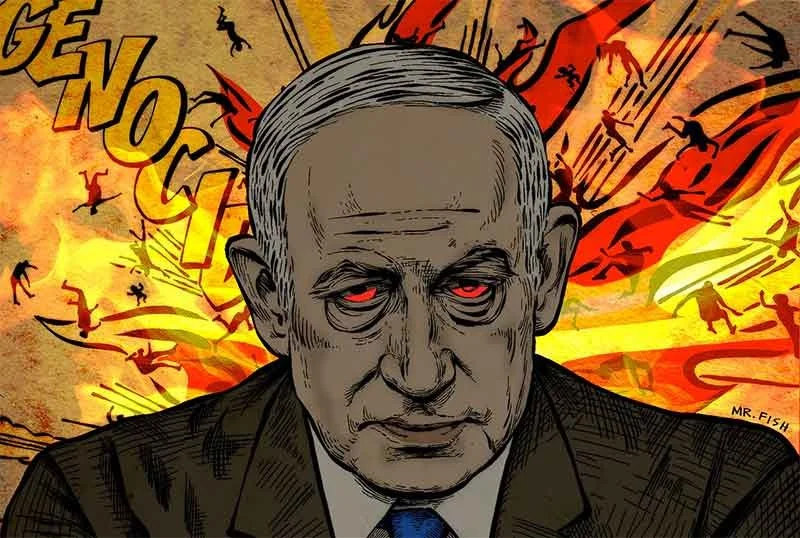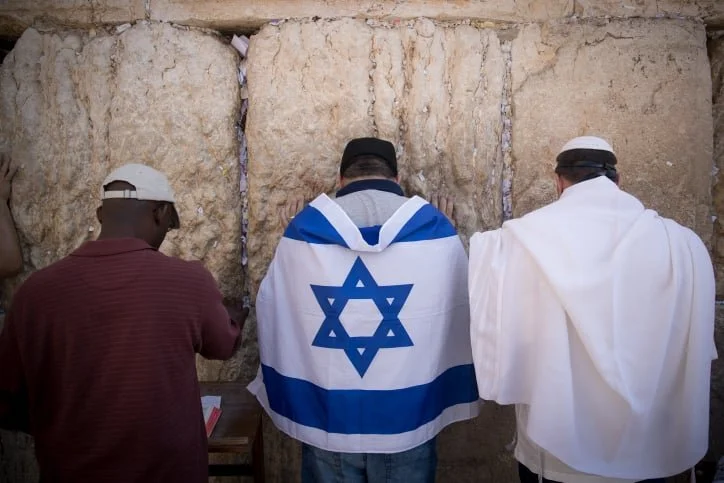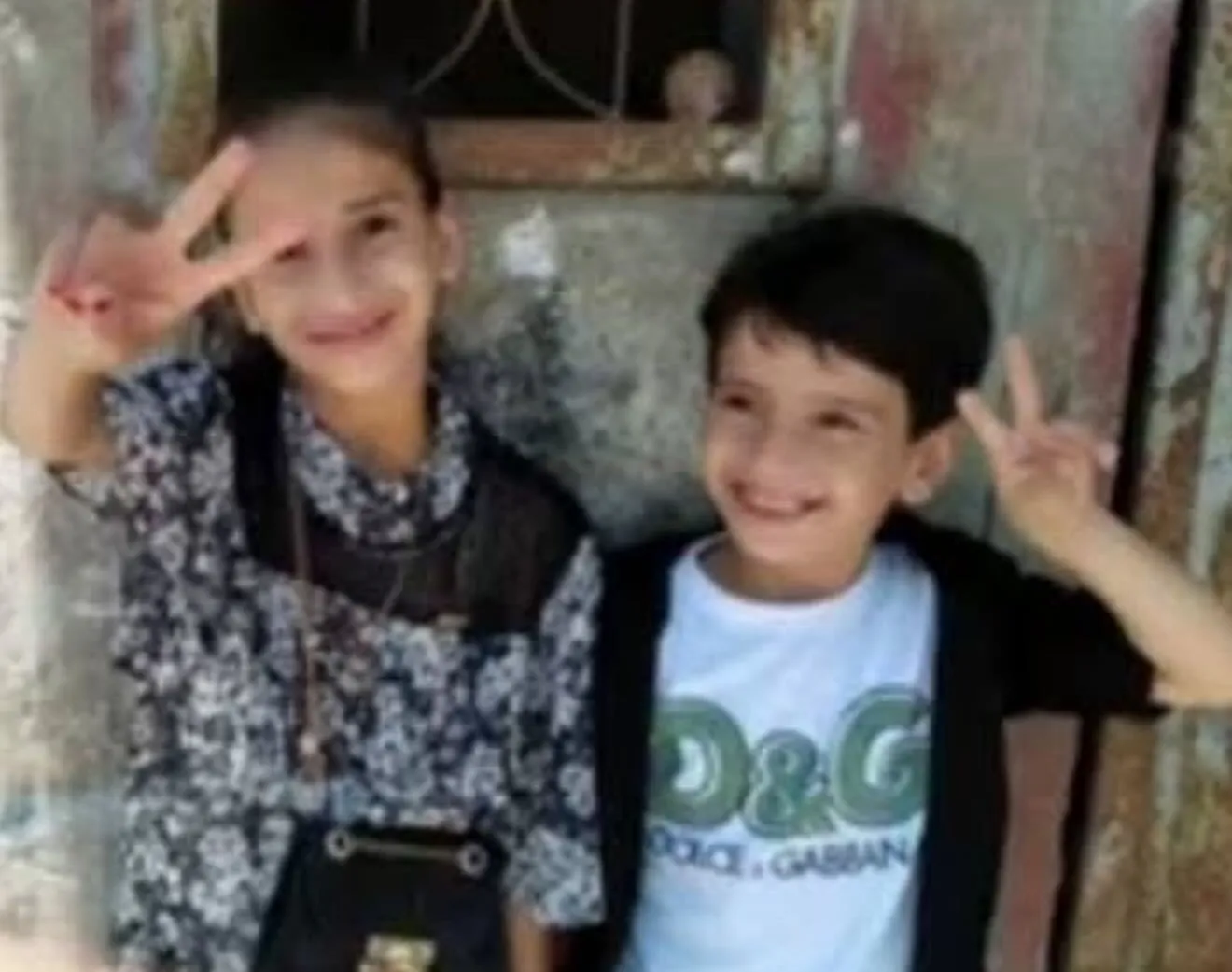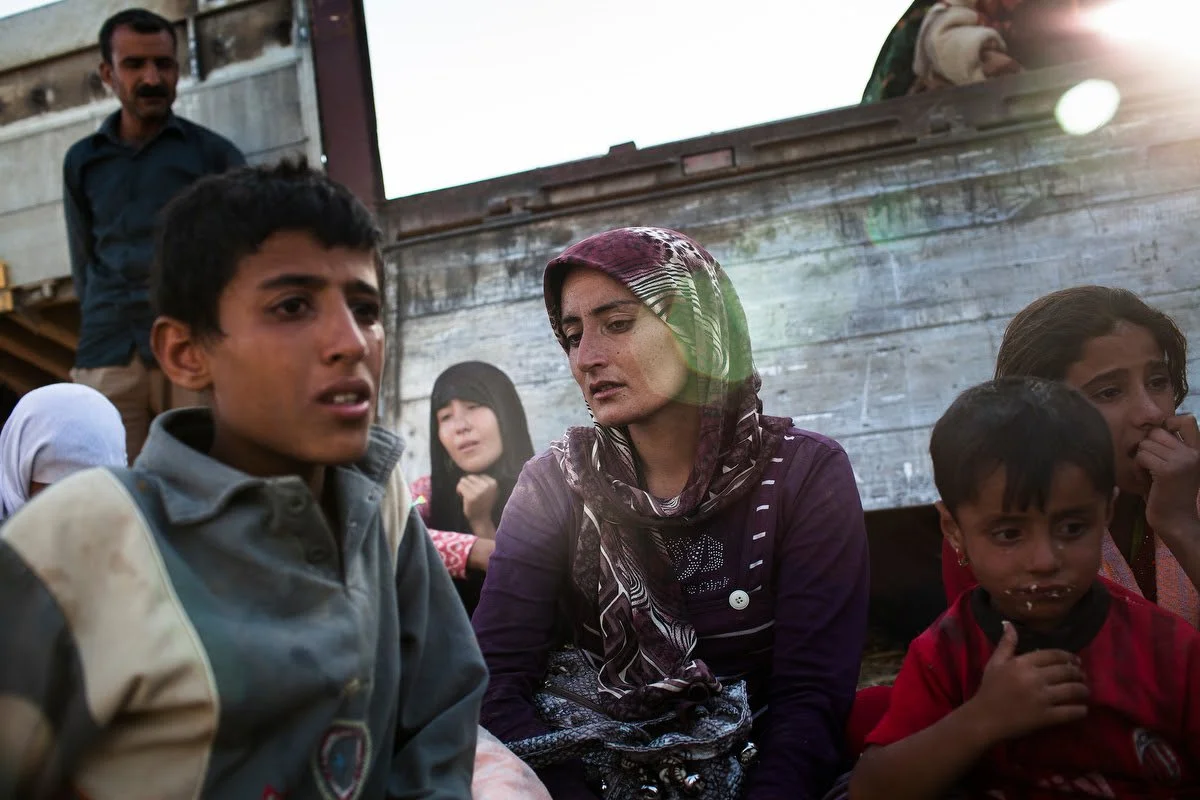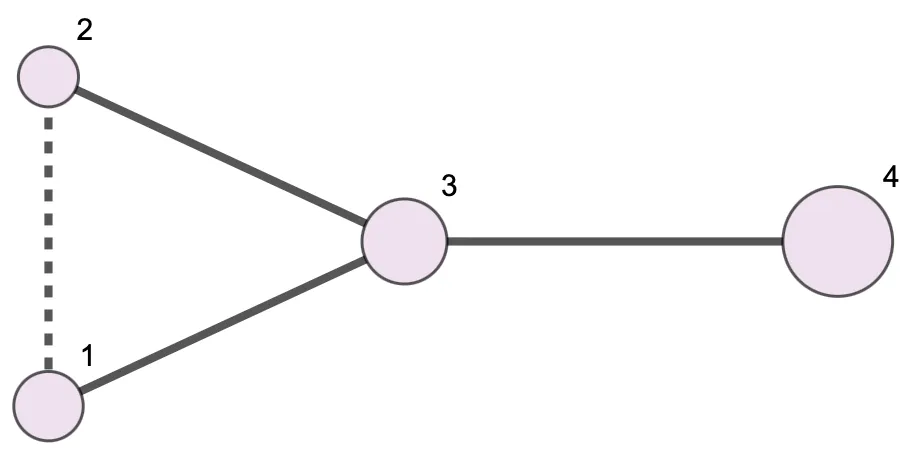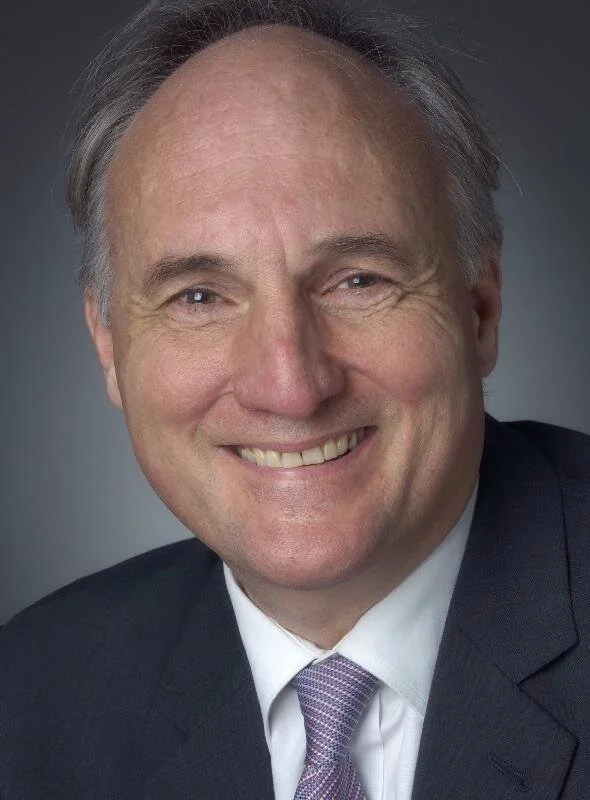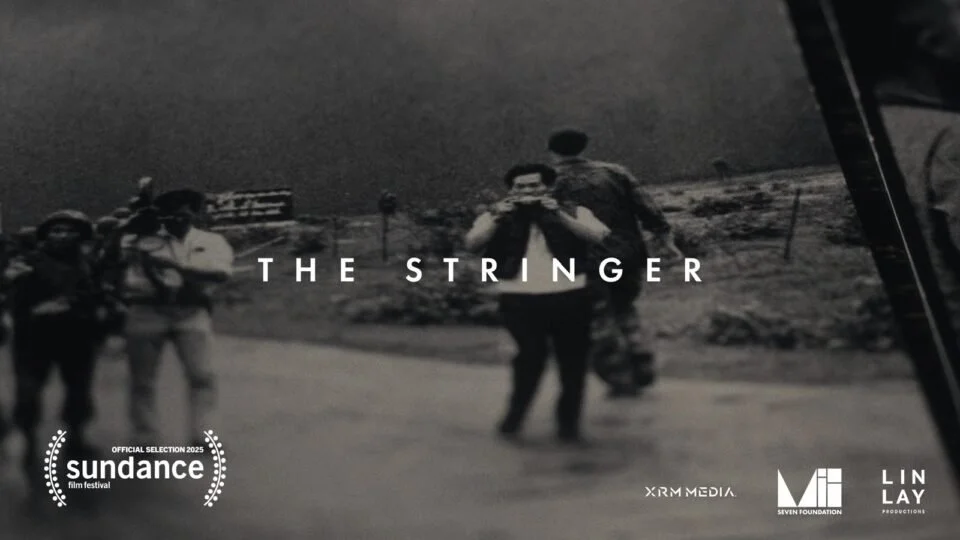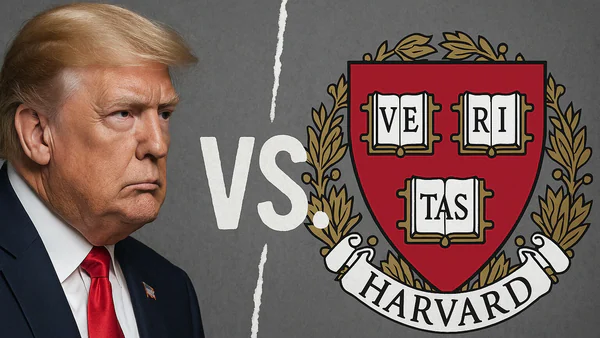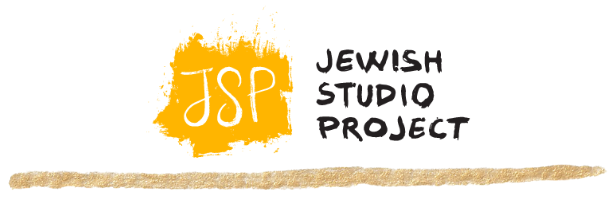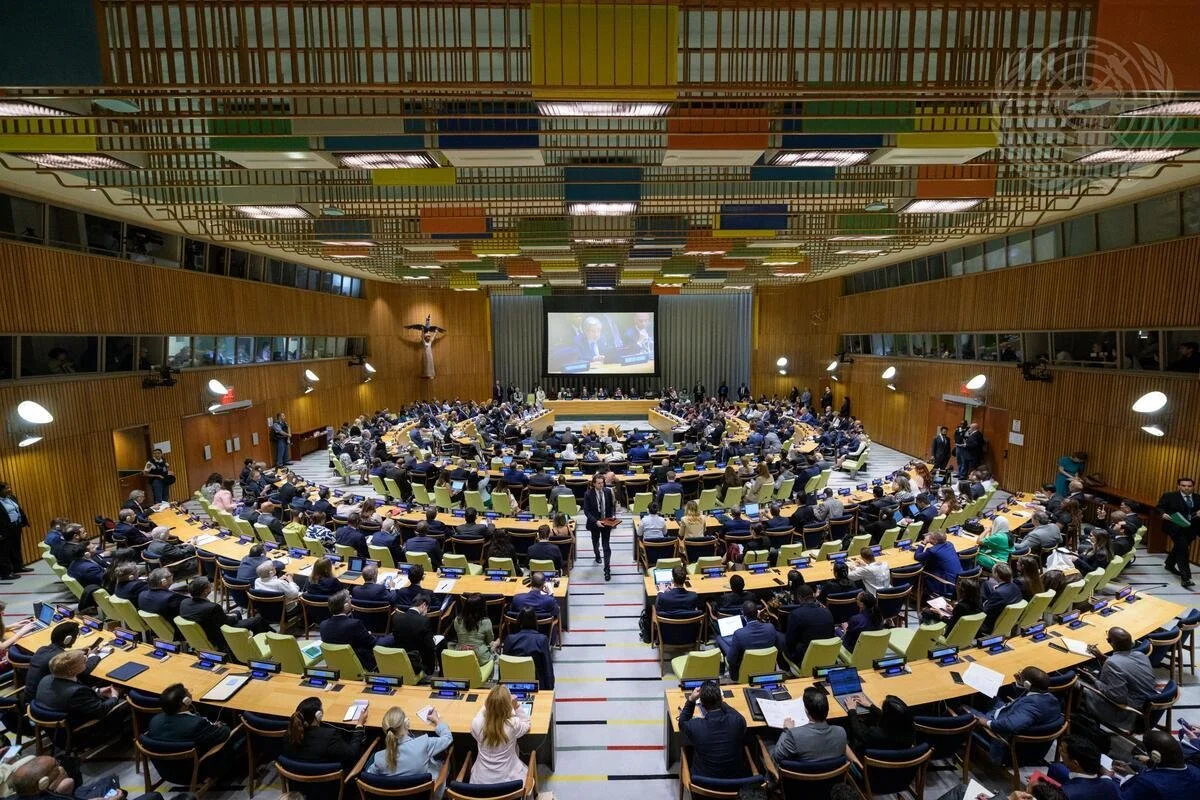Israel’s Assassination of Memory
Chris Hedges, journalist and Pulitzer Prize–winning former correspondent, argues that Israel’s current campaign in Gaza is not only an act of ethnic cleansing but also an attempt to erase cultural memory itself.
The Razing of Gaza
According to Hedges, Israel’s operations have escalated beyond military assault into the deliberate destruction of Gaza City, one of the oldest cities in the world. Bulldozers, tanks, and jets are reducing neighborhoods to rubble while food and water supplies collapse under siege. The Integrated Food Security Phase Classification (IPC) has confirmed famine conditions in Gaza City, with over 500,000 people facing starvation and nearly 300 already dead from hunger, including more than 100 children.
Cultural Erasure
The essay details the destruction of historic and religious sites: the Great Omari Mosque, the Qasr al-Basha fortress, the Barquq Castle, Roman cemeteries, and even Anthedon Harbor dating back to 1100 B.C. Hedges compares this obliteration of memory to the destruction of mosques in Bosnia, arguing the aim is to eliminate Palestinian history and replace it with myth.
The Politics of Denial
Hedges contends that erasing Gaza’s heritage enables Israel to sustain a narrative of victimhood and avoid confronting its violent past. Banning public commemorations of the Nakba and prohibiting Palestinian flags are cited as part of a wider campaign to suppress historical truth. In his view, this denial calcifies society, fuels illusions, and prevents regeneration or reform.
Lessons From History
Referencing South Africa’s Truth and Reconciliation Commission, Hedges stresses that only by acknowledging verifiable facts and confronting atrocities can societies move toward healing. Without this reckoning, he warns, Israel risks not only destroying Gaza but also undermining itself from within.
Source: https://countercurrents.org/2025/08/israels-assassination-of-memory/
Is There a Moral Majority in Israel?
In a recent essay, Israeli commentator Gershon Baskin reflects on the shifting public mood after nearly two years of war in Gaza. He highlights polling that suggests up to 80 percent of Israelis want the fighting to end and hostages returned, even if that outcome means Hamas remains in power and thousands of Palestinian prisoners are released.
Questions of Morality and Accountability
Baskin challenges Israelis to examine whether their desire to end the war stems from moral conviction or war fatigue. He raises pointed questions about the army’s self-image as “the most moral army in the world” and whether the public is willing to acknowledge accusations of war crimes, crimes against humanity, and famine conditions in Gaza.
He cites the Integrated Food Security Phase Classification (IPC), a UN-backed body, which recently accused Israel of responsibility for famine in Gaza, reporting over half a million people in catastrophic conditions. Israel has dismissed the findings, but Baskin argues that without open access for international journalists, official denials lack credibility.
The Black Flag of Illegality
The essay describes a “black flag” hanging over Israel’s actions in Gaza and the West Bank, including widespread destruction, displacement of millions, and continued settlement expansion. Baskin warns that silence among ordinary Israelis risks complicity in policies viewed internationally as violations of humanitarian and international law.
A Call to Israel’s “Moral Majority”
Despite acknowledging Israel’s cultural, technological, and democratic achievements, Baskin urges citizens to confront the reality of the war. He writes that true moral responsibility now lies in stopping the conflict, holding leaders accountable, and preventing the erosion of Israel’s legacy.
According to Baskin, whether Israelis act or remain silent will determine how history judges this period — as a defense of national values or as a “dark age” in the country’s story.
Inside the World’s Longest Running Fraudulent Flag Registry Scheme
An investigation by the Center for Advanced Defense Studies (C4ADS), in partnership with the Financial Times, has uncovered what is believed to be the most expansive and longest-running network of fraudulent ship flag registries in modern history.
At the center of this scheme is Indian national Suniel Kumar Sharma, who, along with a group of associates, has allegedly overseen fraudulent flagging operations for at least a decade. Evidence suggests that this network is responsible for more than half of all fraudulent ship flags currently identified worldwide.
How the Scheme Worked
Legitimate flagging requires ships to obtain official permission from a recognized state, binding them to that nation’s laws and oversight. Fraudulent registries bypass this process by falsely claiming state authorization to issue flag certificates. Ships flying such flags are legally “stateless” and in direct violation of international treaties.
C4ADS reports that Sharma’s network issued hundreds of counterfeit certificates across as many as 12 nations and territories — including the uninhabited South Pacific island of Matthew Island. These false documents allowed vessels, including dozens under international sanctions, to operate under the appearance of legitimacy, shielding them from scrutiny.
Industry Reaction
The revelations have shocked the maritime community. For years, the network evaded detection, exploiting gaps in regulatory oversight. Its exposure underscores the risks posed when private individuals manipulate international shipping norms to enable illicit activity.
Horizons: A New Investigative Tool
The investigation also coincides with the launch of Horizons, a new C4ADS-built platform designed to assist investigators in uncovering hidden links in complex networks. Horizons combines vast datasets — from corporate records and property ownership to sanctions lists — into one of the largest searchable repositories of public information available.
By structuring and modeling this data, Horizons enables investigators, journalists, and researchers to identify patterns and connections that may otherwise remain hidden. C4ADS hopes that both this investigation and the launch of Horizons highlight the value of collaborative, data-driven approaches to tackling systemic vulnerabilities in global industries.
Opinion: Worship of Force and Endless War Risks Undermining Israeli Society
In an op-ed published by Haaretz on August 21, 2025, Ariel E. Levite argues that Israel’s reliance on military might as the ultimate solution to its security challenges is corroding the nation from within.
Levite highlights that Israel is currently engaged across multiple fronts—Gaza, Lebanon, Syria, Yemen, and Iran. While the country has achieved short-term military successes, he warns that these victories mask deeper failures. Social, economic, and political dimensions, often more decisive than battlefield outcomes, are being ignored.
The essay criticizes the dominance of what Levite calls a “Spartan model” of governance, rooted in endless war, militarism, and the suppression of dissent. He outlines three critical shortcomings in Israel’s approach: treating force as the formula for victory, assuming society will endlessly bear the burden of war, and neglecting the need for political and social strategies alongside military ones.
Levite contrasts this with examples where nuanced strategies yielded durable gains—peace treaties with Egypt and Jordan, normalization with Gulf states, and even temporary deals with the Palestinian Authority. He stresses that translating battlefield gains into political arrangements is vital. Without this, Israel risks losing legitimacy, undermining its economic stability, and fueling global hostility.
The op-ed concludes that maintaining a state of perpetual conflict threatens Israel’s future more than its enemies do. Levite, a senior fellow at the Carnegie Endowment for International Peace and Belfer Center at Harvard Kennedy School, calls for a reckoning with the limits of force and a shift toward strategies that combine military capability with diplomacy and societal resilience
Applications to Open for CFR’s 2026–27 International Affairs Fellowship Programs
The Council on Foreign Relations (CFR) has announced that applications for its 2026–27 International Affairs Fellowship (IAF) programs will open on September 15, 2025. These prestigious fellowships provide mid-career professionals in the field of foreign policy with opportunities to broaden their expertise and gain experience in new environments.
Fellowship Opportunities
The upcoming application cycle includes four fellowship tracks:
The International Affairs Fellowship
The International Affairs Fellowship in Indonesia
The International Affairs Fellowship in Japan
The Robert A. Belfer International Affairs Fellowship in European Security
Awardees may spend time working in the United States, Europe, Indonesia, Japan, at an international organization, or at CFR itself (for IAF recipients coming from government service).
A Transformational Program
CFR notes that the programs have advanced the careers of more than 650 alumni since their founding. Past fellows include a former U.S. secretary of state, several undersecretaries of state and defense, and leading scholars and writers in international relations.
Application Timeline
Application portal opens: September 15, 2025
Deadline: October 31, 2025
Applicants must be U.S. citizens and demonstrate a strong commitment to a career in foreign policy.
Learn more about the fellowships and application process here: CFR Fellowships.
Little Amna Went to Get Water. An Israeli Drone Killed Her
Amna and her brother, Baraa, were both killed in separate Israeli airstrikes. Photo via the family’s social media.
The story of 11-year-old Amna al-Mufti from Gaza has drawn global attention after video footage emerged of her final moments. On December 21, 2024, Amna left her temporary shelter near Kamal Odwan Hospital in Beit Lahia to fetch desalinated water. Carrying a white container, she was struck and killed by an Israeli drone missile.
Her father, Ashraf al-Mufti, had been recovering from injuries sustained in an earlier airstrike. He described his daughter as eager to help her family, particularly after his wounding. The footage, released on August 17, 2025, shows Amna running down a street before the missile strikes, a scene that has circulated widely and provoked outrage.
Amna’s burial took place in Beit Lahia Cemetery. Her mother, Najla, and younger brother, Baraa, were later killed in a separate airstrike on May 17, 2025, while sheltering in Jabalia Camp. They were buried in Gaza City’s Shekh Redwan Cemetery, far from Amna’s grave. Another son, Mohammad, was wounded in that same attack—his fourth injury from previous incidents while collecting water.
The tragedy is compounded by the targeting of medical facilities. Six days after Amna’s death, Israeli forces raided Kamal Odwan Hospital, detaining staff, including the pediatrician-director, and setting critical sections of the hospital ablaze.
Pulitzer Prize–winning writer and poet Mosab Abu Toha, who recently joined Zeteo as a contributor, reported the story after speaking with Amna’s father. His account emphasizes the broader reality of daily risks faced by children in Gaza, where access to water itself can become deadly.
Read the full article here: Little Amna Went to Get Water. An Israeli Drone Killed Her.
Make-A-Will Month: Supporting New Voices in Journalism with The VII Foundation
While traveling to a safer place, Yazidi refugees mourn family members lost in the fight with the Islamic State in Iraq and Syria, ISIS, while they were trapped on Mount Sinjar in Faysh Khabur, Zakho, Iraq on Aug. 9, 2014. © Ali Arkady / VII.
This August, The VII Foundation is highlighting Make-A-Will Month as an opportunity for individuals to create lasting support for press freedom and documentary journalism. The initiative emphasizes how legacy gifts can help sustain the work of independent photojournalists who risk their lives to report the truth.
A Story of Courage: Ali Arkady
One example of this mission is the journey of Ali Arkady, a former participant in the VII Mentor Program and now a contributing photographer with The VII Foundation. In 2017, Arkady documented evidence of war crimes committed by an elite Iraqi military unit. Despite significant threats and pressure to remain silent, he persisted in exposing the truth.
With support from The VII Foundation, Arkady’s work was published, and when the risks to his life grew, the foundation helped relocate him and his family out of Iraq. Today, he is not only an award-winning journalist but also an educator, continuing to train new generations in the power and responsibility of visual storytelling.
Legacy Through FreeWill
In recognition of Make-A-Will Month, The VII Foundation has partnered with FreeWill to provide tools for individuals to create or update their wills at no cost. By including the foundation in their estate plans, supporters can ensure the protection of journalists, the amplification of vital stories, and the continuation of documentary projects that advocate for justice and change.
Continuing the Mission
Stories like Arkady’s underscore the importance of safeguarding truth-telling in dangerous environments. Legacy gifts, whether large or small, help guarantee that future generations of journalists can continue this work and that communities worldwide remain informed.
For more information, visit https://www.freewill.com/theviifoundation.
Indonesia at 80: Islamic Roots of Pluralism and the Middle Path
Eighty years after proclaiming independence in 1945, Indonesia continues to navigate the challenges and opportunities of pluralism. A recent essay by journalist and author Sameer Arshad Khatlani highlights how the nation’s resilience is grounded in Pancasila—its national ideology—and the Islamic concept of the ummah wasat, or middle path.
Foundations of Pluralism
Indonesia, the world’s largest archipelago and home to more Muslims than the Middle East and North Africa combined, reflects extraordinary diversity. Its population of 270 million includes Muslims, Protestants, Catholics, Hindus, and others, speaking over 525 languages and dialects. Despite periods of tension, Indonesia has largely sustained peaceful coexistence, which many scholars attribute to the adoption of Pancasila in 1945.
Proposed by the country’s first president, Sukarno, Pancasila enshrines principles such as democracy, social justice, and humanism, and was accepted as compatible with Islamic teachings. Scholars including Azyumardi Azra have described this compromise as a defining example of the Islamic roots of pluralism in modern Indonesia.
Quranic Emphasis on Diversity
Azra and others have argued that the Qur’an’s teachings on diversity and mutual recognition underpin Indonesia’s pluralism. Verses describing the variety of nations, languages, and communities affirm pluralism as a divine principle rather than a threat to religious identity. This perspective links the Indonesian experience to broader traditions of tolerance in Islamic history, including the seventh-century Medina Charter, which recognized Jews and Muslims as part of one political community.
Civil Society and Global Dialogue
Indonesia’s pluralism has also been shaped by influential organizations such as Nahdlatul Ulama and Muhammadiyah, which collectively represent large segments of the population. These groups have promoted democratic values, human rights, and interfaith cooperation, engaging with local and international partners in the aftermath of global conflicts.
Scholars such as Robert W. Hefner and Aziz Sachedina note that Indonesia offers a model of how religious pluralism can foster active engagement and inclusiveness in multiethnic societies. In this context, the ummah wasat continues to guide Indonesians toward moderation, coexistence, and civic harmony.
Looking Ahead
Indonesia’s story, from independence through decades of change, demonstrates how a Muslim-majority nation has balanced religious heritage with democratic governance. As it marks 80 years of independence, the country’s integration of Islamic principles with pluralism remains a significant case study in how diverse societies can thrive.
Read the full essay here: Indonesian Pluralism: How Islamic Middle Path Ummah Wasat Fosters It.
The Math of Power Structures: Utility Function and PrinceRank
Political power can be studied not only through history and theory but also through mathematics. In the second part of his series on Power Structure Theory (PST), Michael Poulshock introduces two core equations that describe how actors within a power system adapt their relationships: the utility function and PrinceRank.
Beyond the Law of Motion
In the first installment, Poulshock explained the “law of motion,” which models how power levels change based on relationships among actors. This second part explores the reverse dynamic — how actors alter their relationships in response to the overall structure.
PST uses two building blocks:
A size vector, representing how much power each actor holds relative to others.
A tactic matrix, mapping whether relationships are cooperative or conflictual.
The Utility Function
According to the theory, actors seek power above all. They may pursue absolute power (increasing their own strength) or relative power (gaining advantage over rivals even at personal cost). This preference is encoded in a parameter, alpha (α), where values closer to 2 represent relative power-seeking and those closer to 3 reflect absolute power-seeking.
The utility function expresses how “satisfied” actors are with the distribution of power. It implies that actors prefer:
To be stronger rather than weaker.
To increase their share of total power.
To face opponents who are divided rather than concentrated.
For example, an actor may prefer two weaker rivals over a single strong one, even if its overall share of power remains the same.
PrinceRank
The third major equation in PST is PrinceRank, inspired by both Machiavelli’s The Prince and Google’s PageRank algorithm. PrinceRank calculates how “happy” each actor is in a structure, factoring in their power, relationships, and preferences. It also incorporates time by discounting future rewards depending on an actor’s patience (measured by the parameter δ).
Visualizations of PrinceRank show how incentives shift across a network, sometimes encouraging aggression, cooperation, or realignment. For instance, an actor may attack a rival not for immediate gain but to prevent that rival from growing stronger later.
Broader Implications
Together, the law of motion, utility function, and PrinceRank allow PST to simulate the dynamics of power politics. These tools can “game out” possible moves, showing how balances of power, domination, resistance, or revolutions might unfold.
Poulshock notes that PST is relevant across many domains — from international relations to organizational politics — wherever power is contested.
Read the full essay here: The Math of Power Structures (Part 2).
The Long War on Gaza
Palestinians in Rafah, a city in the southern Gaza Strip, conducting search and rescue operations in the rubble of buildings destroyed by Israeli airstrikes, December 14, 2023
The humanitarian and political crisis in Gaza has deep historical roots. In an essay published in The New York Review of Books, Sara Roy examines how more than five decades of occupation and conflict have steadily dismantled Gaza’s economy, infrastructure, and social fabric.
From Functional to Dysfunctional Economy
Roy argues that since Israel’s occupation of the Gaza Strip in 1967, the territory has been transformed from a politically and economically integrated region into an isolated enclave. Once functioning as part of a broader economy, Gaza has steadily shifted into dependence, with high levels of poverty and unemployment. What was a productive society has become, over time, a population reliant on humanitarian aid for basic survival.
Current Conflict and Displacement Concerns
The latest war, which escalated after Hamas’s October 2023 attack in southern Israel, has killed more than 19,400 Palestinians and 1,200 Israelis. While Israel has stated that its objective is to destroy Hamas, critics suggest that the broader aim may be the permanent displacement of Gaza’s 2.3 million residents. Roy cites reports of an Israeli intelligence “concept paper” proposing the transfer of Gaza’s population to Egypt’s Sinai Peninsula, as well as subsequent inquiries and public statements pointing in that direction.
Everyday Struggles
The devastation in Gaza is not only defined by bombs and airstrikes but also by daily hardships. Accessing water, electricity, education, medical care, and food has long been fraught with obstacles. Infrastructural collapse and environmental degradation—including water contamination and soil damage—have compounded the suffering. According to Roy, these pressures have been immense, constant, and deliberately sustained, producing long-term impoverishment.
Long Aftermaths
The article places current events within a continuum of policies and actions that have reshaped Gaza over 56 years. The conclusion points to a transformation not only of the economy and infrastructure but also of the political status of its people—from a population with national claims to one struggling primarily for humanitarian survival.
Read the full article here: The Long War on Gaza.
Warmer Futures and the Edge of Habitability
A new article by Peter Droege, published in Sustainable Earth Reviews (2025), warns that Earth is moving past its peak habitability and highlights the urgent need for systemic climate actions.
A Planet at Risk
Droege argues that politically set targets, such as limiting warming to 1.5°C or 2°C, were never grounded in scientific reality and have already been surpassed. Global temperatures crossed the 1.5°C threshold in 2023 and continue to rise at an accelerating pace. Conventional measures like net zero commitments, he notes, are misleading and insufficient.
Climate Engineering vs. Climate Regeneration
The paper distinguishes between quick-fix “climate engineering” projects and the broader concept of “climate regeneration.” While geoengineering approaches often focus on narrow, risky technological solutions, regeneration emphasizes restoring the biosphere’s natural ability to stabilize climate—through protecting forests, soils, and ocean ecosystems.
Ten Policy Imperatives
Droege outlines ten urgent policy measures for climate stabilization, including:
Moving from net zero to absolute zero and net-negative emissions.
Establishing climate defense budgets, redirecting national resources as if preparing for war.
Developing climate peace diplomacy, prioritizing cooperation over conflict.
Creating regenerative financing mechanisms that shift global investments toward long-term biosphere protection.
Ending fossil fuel production and restructuring fossil-based industries.
Supporting natural carbon removal, biodiversity recovery, and regenerative agriculture.
Addressing global migration challenges that will intensify as habitability declines.
Broader Implications
The article warns of cascading tipping points—such as polar ice cap collapse, AMOC disruption, and runaway methane emissions—that could push the planet into conditions unseen since the Pliocene or Eocene eras. Droege emphasizes that only transformative, collective action can prevent irreversible ecological collapse.
About the Author
Peter Droege is Director of the Liechtenstein Institute for Strategic Development and a member of Convisero – the community of Trebuchet, a platform of thinkers and practitioners addressing global challenges.
You can access the full article here: Habitability at the brink: Beyond Paris—emergency imperatives for global policy and local action
War and Cultural Heritage: Biographies of Place
The reconstruction of society after conflict is never straightforward. It involves not only rebuilding physical structures but also redefining the cultural and symbolic meanings attached to them. The book War and Cultural Heritage: Biographies of Place explores this theme by examining how heritage sites across Europe have been reshaped in the aftermath of wars since 1864.
Cultural Heritage in Post-Conflict Societies
Through a series of case studies, the book investigates how buildings, landscapes, and monuments become central to processes of post-war reconstruction. These sites often act as agents of memory and identity, carrying contested meanings that can both unite and divide communities. In many cases, they serve as battlegrounds for competing historical narratives and political claims.
Shifts in Meaning Over Time
The authors highlight how the meaning of heritage sites is not fixed but evolves with changing social and political contexts. A monument may begin as a marker of victory, later be reinterpreted as a symbol of reconciliation, and eventually stand as a reminder of contested history. By tracing these transformations, the book connects theoretical debates on reconstruction and memorialisation with the lived realities of specific places.
Broader Implications
The analysis underscores the enduring impact of war on cultural heritage and shows how the aftermath of destruction continues to shape societies for generations. It also situates heritage within the wider frameworks of conflict, Cold War politics, and post-conflict reconstruction, offering new empirical evidence and critical perspectives on how cultural heritage influences recovery and identity.
For readers interested in cultural heritage, anthropology, war studies, and post-conflict development, this book provides both detailed case studies and broader theoretical insights.
The book’s co-author Dacia Viejo Rose, who has made significant contributions to cultural heritage and war studies, is also a member of Convisero – the community of Trebuchet.
Access the full text here: War and Cultural Heritage: Biographies of Place
Modernization to Collapse: How Foreign Interventions Unmade Afghanistan
Afghan poet: Khalilullah Khalili
A recent feature by journalist and author Sameer Arshad Khatlani traces Afghanistan’s turbulent journey from modernization in the mid-20th century to collapse under decades of foreign intervention and conflict. The account draws on historical analysis, personal stories, and academic research to examine how a country once on the path toward a modern, secular state has been repeatedly undone.
From Reform to Resistance
Khatlani recounts the experience of Afghan poet and diplomat Khalilullah Khalili, who anticipated Soviet intervention following the communist takeover of Kabul in 1978. His son, Masood Khalili, left doctoral studies in Delhi to join the Afghan resistance, later chronicling nine years of struggle in diaries published as Whispers of War (2017). The book records the suffering and resilience of Afghans during the Soviet occupation, a period that shaped subsequent decades of turmoil.
The Promise of Modernization
According to scholars Jawied Nawabi and Peter Kolozi of the City University of New York, Afghanistan in the 20th century had developed significant features of a modern secular state. By the 1970s, it had institutions such as Kabul University, a professional army, and a national airline, alongside reforms advancing women’s rights and education. Political modernization, however, was disrupted by successive foreign interventions that empowered reactionary forces.
Collapse Under Foreign Agendas
The paper Afghanistan: The Making and Unmaking of a Modern State argues that the neoliberal approach after 2001 emphasized governance and capacity-building while leaving Afghanistan dependent on foreign assistance. This, the authors contend, erased the country’s history of modernization and undermined its institutional base. The result was what they call a “phantom state” unable to unify or sustain itself.
Paul Fishstein of Harvard’s Carr Center for Human Rights Policy challenges the persistent myth that Afghanistan never had a functioning state. He points to achievements from the early 20th century under leaders such as Amir Amanullah Khan, who introduced constitutional reform, compulsory education, and women’s emancipation. Foreign-backed conflicts, Fishstein argues, dismantled rather than revealed state weakness.
Personal Stories Amid National Struggles
Masood Khalili’s life reflects Afghanistan’s arc of resistance and loss. He survived the Soviet war, served as a diplomat, and narrowly escaped death in the 2001 assassination of Mujahideen commander Ahmad Shah Massoud. The attack, carried out two days before 9/11, left Khalili severely injured but alive. Massoud, regarded by many as a visionary leader, was killed. His death preceded the U.S.-led invasion that toppled the Taliban, though the victory was tempered for Khalili by the absence of his commander.
The Present Day
The Taliban’s return to power in 2021 has brought Afghanistan back to restrictions reminiscent of earlier decades, with women largely excluded from public life. Masood Khalili, now 74, has reflected on the failures to establish enduring leadership despite past victories. “We won against the Soviets but eventually lost,” he said in a 2017 interview, citing a lack of vision for Afghanistan’s future.
The article concludes that Afghanistan’s story is not one of inherent statelessness but of interrupted modernization, where foreign intervention repeatedly dismantled progress. For many, the lives of figures such as the Khalilis symbolize both the hope and the unfinished struggle for a stable Afghan state.
Read more here: Modernization to Collapse: How Foreign Interventions Unmade Afghanistan
A Search for Truth Behind “Napalm Girl”
A new documentary, The Stringer, is raising questions about the authorship of one of the most iconic war photographs ever taken. Known as “The Terror of War” or more informally as “Napalm Girl”, the image of nine-year-old Kim Phuc fleeing a napalm attack in 1972 became a defining moment of the Vietnam War.
The photograph, long credited to Associated Press staff photographer Nick Ut, won both the Pulitzer Prize and World Press Photo awards. However, the film suggests that the photo may in fact have been taken by a Vietnamese freelance photographer, Nguyen Thanh Nghe.
The Documentary
Directed by Bao Nguyen, produced by Fiona Turner, and co-created with photojournalist Gary Knight, The Stringer premiered earlier this year at the Sundance Film Festival. The filmmakers combined archival material, eyewitness testimony, and forensic analysis to revisit the events of June 8, 1972.
Former AP photo editor Carl Robinson, a key source in the documentary, claims that the image came from a roll of film purchased from a Vietnamese stringer for $50, but that senior AP leadership decided to credit Ut. This was allegedly done in part out of loyalty to Ut, whose brother—also an AP photographer—had been killed in Vietnam years earlier.
The investigation uncovered further details, including evidence about the type of camera used. The negative of the famous photo appeared consistent with a Pentax camera, which Nghe used, though AP has noted that Ut also owned a Pentax.
Broader Implications
The film explores not only who took the photograph but also the broader issue of how local photographers, or “stringers,” have historically been overlooked and under-credited. Gary Knight, who is a member of Convisero – the community of Trebuchet, emphasized the risks stringers face compared to foreign correspondents, often without protective equipment or institutional support.
The documentary also highlights parallels to the present day, where local photographers in conflict zones such as Gaza face similar challenges to credibility, recognition, and safety.
Continuing Debate
The Associated Press has conducted its own internal investigation and maintains that there is no conclusive evidence to change the attribution. Ut has consistently defended his authorship, and his attorney has indicated plans to file a defamation lawsuit. World Press Photo, however, has suspended authorship attribution while awaiting further evidence.
The filmmakers note that Ut himself may also be a victim of circumstance, as the decision to credit him was reportedly made by his superiors.
What Comes Next
The Stringer is currently screening at festivals, with wider distribution expected later this year. Its release is anticipated to spark renewed debate about authorship, accountability, and the recognition of local journalists in war reporting.
For more details, the original article by Charles Sennott can be read here: A Search for Truth Behind “Napalm Girl”.
Palestinian Doctor Highlights Struggles of Healthcare Amid Conflict
A new documentary released by The Guardian, titled The Oath, has drawn attention to the experiences of Palestinian doctors working in Israel and the occupied territories. The film follows Dr. Lina Qasem-Hassan, chairwoman of Physicians for Human Rights Israel (PHRI), who describes the challenges of practicing medicine during a period of escalating conflict.
The Profession and Its Responsibilities
Dr. Qasem-Hassan emphasizes that medicine is grounded in humanistic values—justice, compassion, and the commitment to do no harm. She argues that doctors have a dual responsibility: to provide medical care and to advocate for patients’ right to health. According to her account, this commitment has become increasingly difficult to uphold in the face of war, displacement, and discrimination.
Impact of the Gaza War
The documentary was filmed over the past year, beginning in March 2024, several months after Israel’s assault on Gaza began. By then, thousands had been killed and Gaza’s health system had already sustained major damage. Since then, the destruction has continued, with hospitals, schools, and residential areas affected. International observers, including some legal scholars and human rights groups, have described the situation as amounting to genocide.
Dr. Qasem-Hassan recounts personal tragedies, including the death of relatives of her sister-in-law in bombings, as well as the injury of young family members who lacked access to adequate treatment due to the collapse of Gaza’s healthcare system. She also notes that over 1,500 Palestinian medical personnel have been killed since October 2023, with others detained or subjected to mistreatment.
Persecution and Silencing
According to her testimony, Palestinian healthcare workers in Israel face increasing hostility, both within medical institutions and from the public. Expressions of sympathy for civilians in Gaza, she says, are often equated with support for terrorism and can result in disciplinary measures or dismissal. One of her colleagues was reportedly fired after delivering a speech criticizing the conduct of the war.
She describes the environment as one in which anti-Palestinian sentiment has surged, and slogans advocating for Gaza’s destruction are tolerated within the healthcare system. This, she argues, undermines the neutrality of medicine and erodes the professional oath of equal care.
A Continuing Struggle
Despite the risks, Dr. Qasem-Hassan states that she continues to speak out, insisting that silence renders the medical oath meaningless. For her, the act of treating patients, particularly in Gaza, is not only a medical duty but also a moral stance against injustice.
The film The Oath presents her story as part of a broader examination of how conflict reshapes the responsibilities and challenges of healthcare workers.
Click here to watch the film: The Oath
Why Trump’s Policies Target Harvard and the Future of Academic Freedom
Harvard University has become a focal point in recent debates over academic freedom in the United States, with critics pointing to the impact of current political leadership on higher education.
Background
America’s universities have historically been regarded as global leaders in research, innovation, and intellectual freedom. Their rise accelerated after 1939, when European academics fleeing Nazi persecution helped shape institutions like Harvard, MIT, and Stanford. Over the decades, these universities produced Nobel laureates, advanced scientific discovery, and supported new enterprises that strengthened the U.S. economy.
Current Tensions
In recent years, however, universities have faced political and financial challenges. The Trump administration has restricted discussions on equity, diversity, affirmative action, climate change, vaccine efficacy, and criticism of Israel, labelling many of these areas as “woke.” In 2024, Vice President J.D. Vance declared that “professors are the enemy,” reflecting a growing hostility toward academic institutions.
Columbia University recently agreed to pay hundreds of millions of dollars in damages and settlements in exchange for the restoration of federal research funding. Following this, Harvard has also come under pressure, with the federal government withholding $9 billion in funds and revoking its eligibility to host international students. Lawsuits have been filed, and other universities are closely watching the outcome.
The Role of Academic Freedom
Harvard, despite its shortcomings—including historic ties to political elites and controversial admissions practices—has long upheld its motto, Veritas (truth). The institution has provided a space where uncomfortable ideas could be debated, contributing to advancements in fields ranging from cosmology to the social sciences.
Analysts note that academic freedom remains the key factor distinguishing leading global universities. By contrast, authoritarian governments often restrict such freedoms, considering them obstacles to centralized control. Comparisons have been drawn to institutions such as Jawaharlal Nehru University in India, which once had a reputation for open discourse but has since faced restrictions.
South Asian Perspective
The situation has also highlighted contrasts with South Asia. In Pakistan, universities founded during the British colonial period never fully adopted the ethos of free inquiry. Post-independence, the quality of institutions declined further as religious and political pressures grew. Today, critics argue that universities function more as controlled spaces than centers of academic freedom, with limited emphasis on intellectual independence.
Outlook
Observers suggest that the fate of Harvard under current U.S. policies could serve as a test case for the resilience of academic freedom. While America’s universities remain internationally prestigious, ongoing restrictions and political battles raise questions about how much of their independent spirit will survive in the years ahead.
Note: The article was written by Pervez Hoodbhoy, a physicist, public intellectual, and member of Convisero – the community of Trebuchet.
Creativity Circles & Studio Immersive: Two Ways to Grow Your Creative Capacity
This fall, the Jewish Studio Project (JSP) is opening new pathways to deepen creativity, spiritual practice, and community connection. Whether you are looking for a consistent, peer-led group to ground your practice or a transformative retreat experience, JSP offers two opportunities designed to nourish both creativity and spirit.
Two Offerings for Creative Growth
Creativity Circles
From November 2025 – June 2026, small peer-led groups of 8–12 people will gather monthly to practice the Jewish Studio Process (JSP) through text study, art-making, and reflection. These circles provide ongoing support, creative nourishment, and community leadership opportunities. Applications are now open to host a circle in your own community.
Studio Immersive
From Monday, November 9 – Saturday, November 13, 2025, Rabbi Adina Allen will lead a five-day retreat at JSP’s Bay Area studio. Participants will explore hands-on art-making, deep learning, and spiritual practices rooted in the Jewish Studio Process. This immersive experience is designed for those seeking personal and professional growth through embodied creativity, Jewish wisdom, and community.
Why It Matters
The Jewish Studio Project envisions a world where everyone is connected to their inherent creativity. Both the Creativity Circles and the Studio Immersive invite participants to engage with art, text, and reflection in ways that strengthen resilience, spark imagination, and build meaningful connections.
Broader Context
According to JSP, both the circles and immersive are part of its broader vision of encouraging people to connect with their inherent creativity. Applications are currently open for both initiatives, and information about participation is available through the organization’s website.
To learn more, visit the Jewish Studio Project.
The Complex Legacy of Srebrenica and Why Today’s Wars Never Seem to End
Candles, silence, and headscarves in Belgrade symbolise the mothers of those killed in the Srebrenica massacres of 30 years ago. Image: AFP via National News
Earlier this month, the world marked the 30th anniversary of the Srebrenica genocide, one of the darkest chapters of the Balkan wars. The silence of mourning mothers and the flicker of candles in Belgrade remind us that the tears of survivors will never fully dry. Yet, Srebrenica’s legacy stretches far beyond Bosnia and Herzegovina – it raises unsettling questions about how societies confront the past, and why so many of today’s wars never seem to end.
Lessons from a Turbulent History
The Balkan region has long been a crossroads of empire and conflict. From Austro-Hungarian and Ottoman rivalries to the rise and fall of Yugoslavia, history has shaped shifting national boundaries and identities. This volatility underscores a central lesson: the sanctity of borders is a relatively modern concept. Around the world today, some 150 territorial disputes remain unresolved – from the South China Sea to Kashmir, Ukraine, and Palestine.
Diplomacy, Kapila argues, should not always chase final “winner-loser” solutions. Instead, nations may be better served by learning to disagree in peace, rather than igniting conflicts over symbolic land.
Ethnicity, Economy, and Statehood
Srebrenica showed how fragile states can become when ethnic identities are politicised. Leaders in the Balkans inflamed divisions between Orthodox Serbs, Catholic Croats, and Muslim Bosniaks. The rapid international recognition of ethnic states by the European Commission further entrenched fault lines, paving the way for war.
Economic disruption also played a role. Yugoslavia, once relatively stable, disintegrated in the 1980s as prosperity crumbled. The lesson is stark: states rise and fall not only on governance models but also on economic security and inclusive democracy.
Justice and Its Limits
The struggle for accountability in Srebrenica offers another sobering lesson. It took years before international courts formally recognised the genocide, by which time survivors had little more than symbolic consolation. Selective genocide determinations by states and slow-moving international tribunals often deepen divisions rather than heal them.
For Serbia, being branded with genocide has fuelled denial and nationalist resentment. For Bosnia and Herzegovina, it has left deep fractures. And globally, contested narratives around genocide have been weaponised in conflicts from Rwanda to Darfur, Myanmar to Gaza.
The Power – and Danger – of Language
In modern conflicts, bombs and bullets devastate lives, but words can inflict generational wounds. The language of genocide carries immense moral weight, making it a potent political weapon. Both perpetrators and defenders invoke it, often stretching definitions to rally support or delegitimise opponents. This verbal warfare fuels anger, trauma, and denial, ensuring that cycles of conflict endure long after the physical battles end.
A Warning for the Future
As the flowers placed at Srebrenica commemorations wither, their message remains urgent: without universal truths and shared recognition of suffering, there can be no final peace. Selective memory and competing narratives keep wounds open, perpetuating cycles of violence across generations.
For survivors from Bosnia to Gaza, Ukraine to Myanmar, the challenge is not only rebuilding lives but also confronting the narratives that divide. Unless the world learns from Srebrenica – not just to mourn, but to act with inclusive justice – the wars of today may never truly end.
Trusteeship of Strategic Areas: A Roadmap Toward a Palestinian State
A decades-old and nearly forgotten UN resolution may provide a fresh pathway toward resolving one of the world’s most enduring conflicts. Resolution 21 [S/318], ratified on April 2, 1947, designated certain territories as “strategic areas” to be temporarily administered under trusteeship. This framework, once applied to Pacific Islands after World War II, is now being reexamined as a potential model for the creation of a Palestinian state.
A Historical Framework Revisited
The Trust Territory of the Pacific Islands (TTPI) was established in 1947 and administered by the United States for nearly half a century. Under UN oversight, the arrangement fostered governance, economic development, and eventual independence for multiple island states. Applying this model to Gaza and the West Bank could create a structured, time-bound transition toward Palestinian statehood.
The Proposal
The plan calls for the United States to act as a temporary administrator of Gaza and the West Bank for a five-year period, under a UN trusteeship mandate. Backed by Arab donors and the European Union, this administration would:
Rehabilitate infrastructure and institutions in Gaza and the West Bank.
Establish democratic, secular, and civil governance frameworks.
Build educational and administrative systems based on constitutional models such as Germany’s Grundgesetz.
Prepare the way for a free, demilitarized, and secure Palestinian state along pre-1967 borders with minor territorial exchanges.
Challenges and Reactions
President Trump’s February 2025 remarks about “owning Gaza” raised skepticism across the Arab world. Yet, if reframed within Resolution 21 [S/318], such proposals could be transformed into a UN-sanctioned, internationally coordinated effort.
Israel’s leadership is expected to resist this model, particularly given the call to dismantle outposts and restrict extremist groups. Still, the proposal envisions negotiated territorial adjustments, allowing Israel to retain large urban blocs while ensuring Palestinians achieve statehood.
Lessons from History
Just as the Marshall Plan rebuilt postwar Europe, a global effort could rebuild Gaza and the West Bank. The TTPI precedent demonstrates how trusteeship can balance temporary external administration with long-term self-determination.
The envisioned Palestinian constitution would enshrine secularism, separation of powers, and individual rights, countering extremist ideologies and fostering stability. Such a framework could not only inspire governance in Palestine but also influence democratic practices in Israel.
A Global Priority
The urgency of this proposal lies in preventing further cycles of war and isolation. With international sanctions looming, Israel risks deeper isolation similar to that once faced by South Africa under apartheid. A UN trusteeship model, led by the U.S. and backed by strategic allies, could avert escalation and create a viable two-state future.
The idea is bold, controversial, and far from guaranteed. Yet, revisiting the “forgotten” Resolution 21 [S/318] offers a structured, historical roadmap to finally establish a Palestinian state—democratic, secure, and peaceful—living side by side with Israel. For a region long plagued by conflict, trusteeship may be the bridge to a just resolution.
Dayenu: Confronting the Climate Crisis with Spirit and Action
Dayenu is a Jewish climate movement dedicated to tackling the climate crisis with both spiritual audacity and bold political action. Rooted in Jewish values, experience, and tradition, Dayenu builds community, nurtures resilience, and empowers people across the United States to work toward a just, livable future for all.
A Movement for Climate, Jobs, and Justice
Through campaigns like WE RISE: Climate, Jobs, and Justice for All, Dayenu mobilizes state and local communities to advance clean energy, strengthen climate resilience, and secure environmental justice. Guided by the Jewish teaching “Ma’alin ba-kodesh v’ayn moridin”—once we rise on a holy path, we do not descend—the organization inspires hope while driving collective action.
Dayenu organizers across New York, California, and beyond are building powerful networks to keep oil and gas buffer zones, strengthen climate policy, and create opportunities for Jewish communities to engage in grassroots leadership.
Spiritual Resourcing and Community Building
Dayenu understands that the climate crisis evokes fear, grief, and uncertainty. To support individuals and communities, it provides spiritual resources such as Jewish music, art, ritual, and climate-focused Torah. These practices help transform anxiety into courage, fostering resilience and motivating communities toward action.
One of its most powerful models for engagement is the Dayenu Circle—small community groups that serve as local hubs for climate activism. These circles empower members to canvass, organize, and take meaningful steps toward environmental justice.
Mobilizing Climate Voters
With more than 400 elections scheduled across the country this year, Dayenu is also working to ensure climate remains a key issue at the polls. The movement mobilizes climate voters at the city, state, and national levels, emphasizing that democratic participation is crucial for shaping a just climate future.
Centering Inclusivity
Dayenu has also created spaces such as the Jews of Color Caucus, which brings together diverse voices to address the immediate and long-term harm caused by the climate crisis. This caucus focuses on resilience, justice, and cultivating supportive community bonds.
Recent Highlights
Rabbi Jennie Rosenn, Dayenu’s founder, was featured on the Los Angeles Times podcast Boiling Point (September 11, 2025).
Emily Koester secured a local victory for the Make Polluters Pay law in Massachusetts by introducing a supporting resolution in Greenfield (September 10, 2025).
Hundreds of Jewish climate activists protested against the Environmental Protection Agency’s rollback of environmental protections under the Trump administration (September 4, 2025).
How to Get Involved
Dayenu offers many ways for individuals to take part:
Join or start a Dayenu Circle in your community.
Attend upcoming gatherings, workshops, and public actions.
Explore Dayenu’s rich library of resources in music, organizing, and climate Torah.
Contribute as a monthly donor to help sustain the movement’s long-term impact.
Dayenu’s mission is clear: the climate crisis is the defining challenge of our time, and it will take all of us to meet it. By blending Jewish spirituality with grassroots activism, Dayenu provides both hope and action, ensuring that communities rise together to build a just and sustainable world.
To learn more or get involved, visit Dayenu.org.
